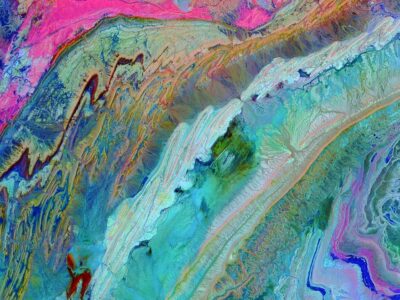In part 2 of this Gaia hypothesis series, we ended with the question:
How to prove that Mother Earth lives?
I like this question because it’s provocative, and it’s paraphrased from James Lovelock’s writing. It is, however, the only time I noted him to mention Mother Earth. Lovelock was a proper scientist who wrote his hypothesis for the scientific community. Scientists don’t talk about Mother Earth, or Gaia the Greek Earth goddess.
In fact, it took over 30 years for science to publicly recognize his idea of a living, self-regulating Earth. Today, the Gaia hypothesis is accepted as Gaia theory though, so Lovelock’s initial insight and his persistence paid off.
The discussion that follows is based in science, so I’ll save Mother Earth for later.
Let’s move on with the question as Lovelock might phrase it:
How does Gaia control the environment?
As a reminder, the Gaia I’m referring to is defined as the entire surface of this planet — the living organisms plus the air, the oceans, and the rocks. The whole region where life exists on the Earth is to Gaia what your body is to you.
Lovelock proposed many ideas for further research, and almost all of them involve biological controls. Meaning, Gaia uses living organisms to maintain the Earth’s temperature, atmospheric composition, and ocean salinity.
Here are some of the ideas he proposed:
Temperature
When life first began, the sun’s heat output was 25% less than it is now. This would have made the planet far too cold for life to exist. How did Gaia regulate the temperature?
We all know that some life forms can change color to camouflage themselves. Scientists have studied a light-colored microorganism with ancient origins. It grows on highly reflective salt marshes and turns black with the seasons. It’s possible that Gaia used this or a similar organism to darken the planet surface and absorb more heat.
Atmosphere
Despite its highly imbalanced chemical composition, this planet’s atmosphere has remained relatively stable throughout time. How is this possible?
Oxygen
Oxygen in particular has remained stable at 21%, which is an upper safe limit for life. How does Gaia manage this?
One idea is methane — a two-way oxygen regulator. It’s primarily produced by microorganisms that live deep in the muds of marshes, wetlands, and estuaries and feed on buried plant material. Methane that reaches the upper atmosphere gives off oxygen. In the lower atmosphere, methane takes up oxygen.
There may be a signal that alters the microorganisms’ activity when oxygen levels become unstable.
“. . . in the absence of methane production, the oxygen concentration would rise by as much as 1 per cent in as little as 24,000 years: a very dangerous change . . ..”
Carbon Dioxide
We all know by now that carbon dioxide is an important greenhouse gas. It helps keep this planet warmer than it would otherwise be.
Ignoring the complication of humans burning fossil fuels, how does Gaia keep carbon dioxide in check? Here are a couple of ways:
The ocean contains 50 times more carbon dioxide than the air. If carbon dioxide in the atmosphere decreases, the ocean releases some of its supply to maintain the balance.
The ocean also absorbs carbon dioxide. What if too much carbon dioxide builds up in the ocean? The surface layers of the ocean are filled with plankton species that grow shells out of carbon. If there is an overabundance of carbon, these populations increase and take up the excess. They have short life spans so it doesn’t take long for their shells to fall to the ocean floor, thus removing carbon dioxide from circulation.
Ocean Salinity
The amount of salt washed into the oceans from land, over millions of years, is enough to have made the waters too saline for life. How has Gaia removed salt from the oceans?
For this, Lovelock suggests a variety of large-scale engineering projects.
To remove the amount of salt necessary to maintain the ocean, one idea is coral reefs. Gaia would have to create places where large amounts of water could be stored and rapidly heated. As the water evaporates, the salt would be deposited and removed from circulation.
“Is it possible that the Great Barrier Reef, off the north-east coast of Australia, is the partly finished project for an evaporation lagoon?”
To show that Lovelock’s Gaia doesn’t only use microorganisms and simple coral polyps to make this planet fit for life, I’ll add one more example:
Phosphorus
Phosphorus is a land-based element that is essential for life. It’s produced by the weathering of rocks and eventually runs off into the ocean. Lovelock suggests that Gaia might use migratory birds and fish to return phosphorus to the land.
“The strenuous and seemingly perverse efforts of salmon and eels to penetrate inland to places distant from the sea would then be seen to have their proper function.”
Now that we have some idea of how Gaia makes this planet habitable, let’s return to Mother Earth. Scientists may not like to talk about her, but to me, she is the main point of this discussion.
In part 4, I’ll offer some concluding thoughts on the link between Mother Earth and the Gaia hypothesis.
Missed the beginning? part 1, part 2
Sources:
- James Lovelock, Gaia: A New Look at Life on Earth
- James Lovelock, We Belong to Gaia


 Where Did the Goddess Go?
Where Did the Goddess Go?